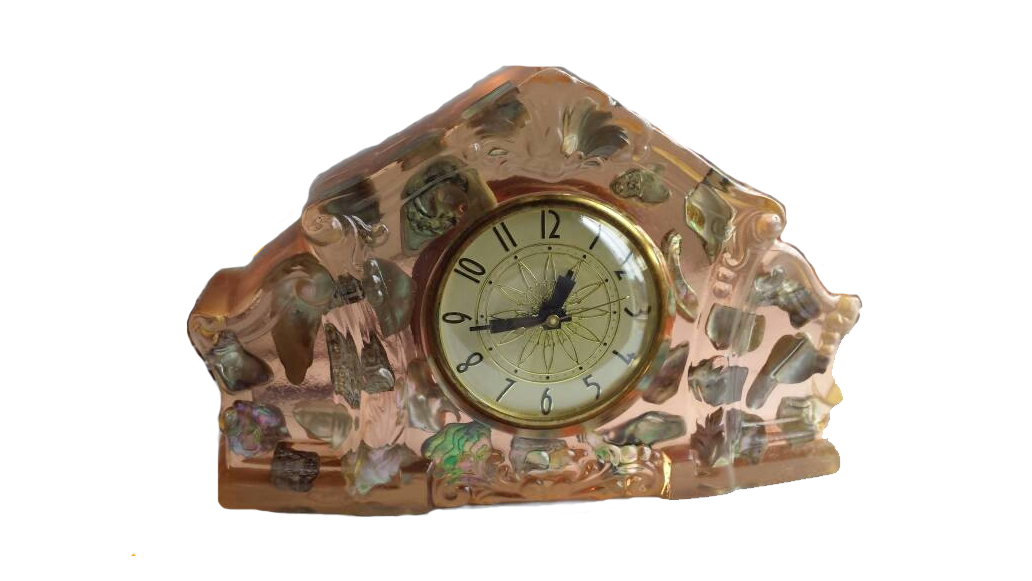
by Vomit Clock | Feb 22, 2021 | Craft History, Vomit Clock Pictures
1. The Children’s Classic Vomit Cogsworth, is that you? Though the resemblance is strong, you probably won’t catch this guy hanging out with Lumiere or Princess Belle. We’re gonna go out on a limb here and say that the french were not, are not, and probably...

by Vomit Clock | Feb 15, 2021 | Ceramics, Craft History, Exhibit, Molds
In 1900s Austria, a young man working at a tile company named Frank Hollendonner learned how to make ceramic molds for pouring tiles. This young man would soon make his way from Austria to New Jersey, expanding his talent for mold making into ceramic molds used for...

by Vomit Clock | Feb 1, 2021 | Craft History, Exhibit
Outside a small craft store in Birmingham, Alabama, a man pours plaster molds in a makeshift plant of rough sheets of plywood on top of dusty sawhorses. These plaster molds, soon to be distributed around the country and designed for the typical ceramic vases or...

by DaisyG | Jan 11, 2021 | Craft History
Orgone resin, unlike lucite, has a long and complicated origin story. Get ready for a wild ride. In the 1930s, an Austrian doctor of medicine and a psychoanalyst named Wilhelm Reich discovered–supposedly–an “all-permeating cosmic life force” that he called...

by Vomit Clock | Dec 28, 2020 | Craft History
Lucite, one of the trade names for the chemical compound polymethyl methacrylate, also known as acrylic, acrylic glass, or plexiglass, is a fascinating material used in a startling variety of ways. The compound is a transparent thermoplastic that is used as an...

by Vomit Clock | Dec 29, 2019 | Ceramics, Craft History, Lanshire, Molds
Using pre-made clock parts, and a mold or form, kit clocks were a way for the crafter or ceramicist to make a clock at home. Shown below is an advertisement from the April 1959 Issue of Ceramic Monthly, which includes a reference to Lanshire Clock & Instruments...







